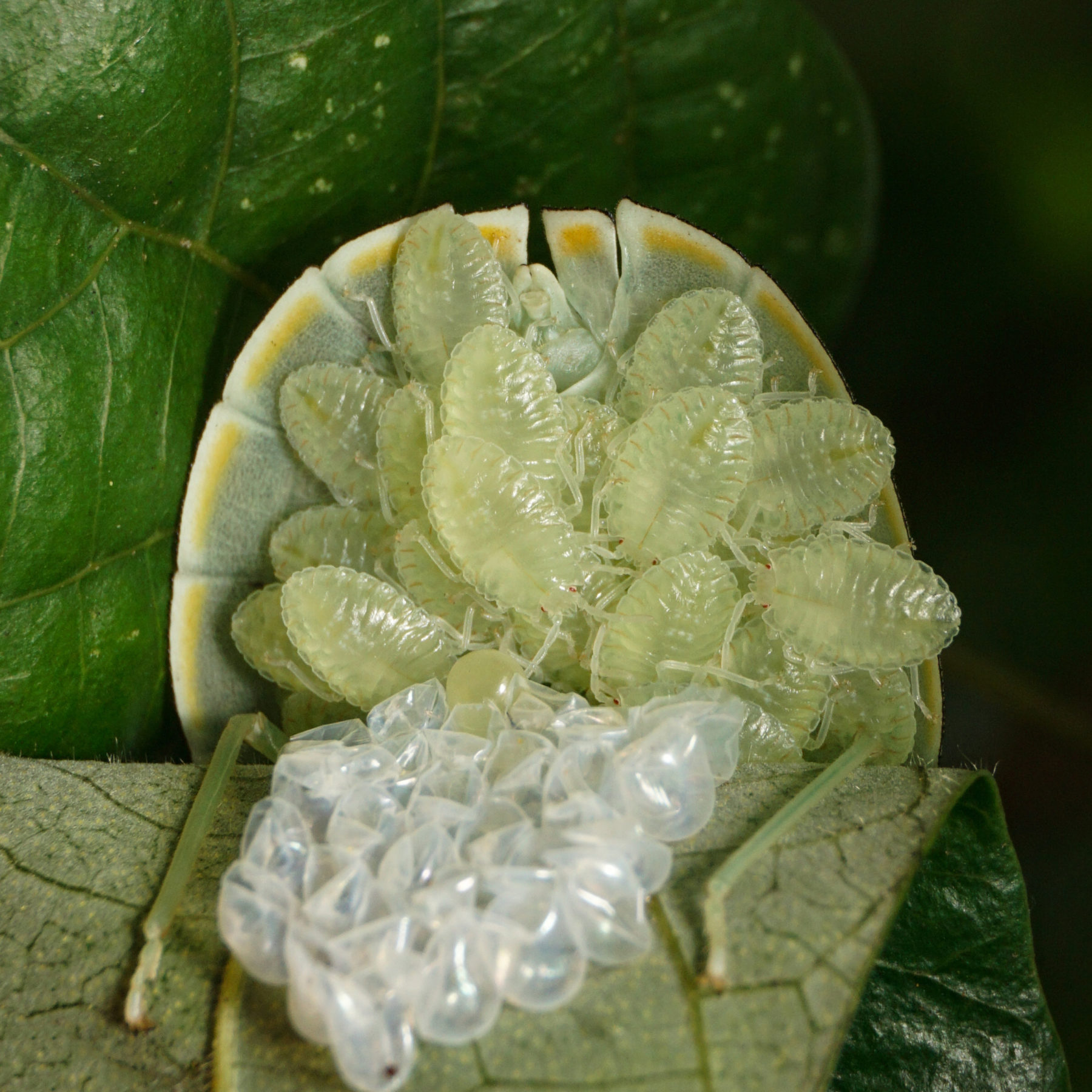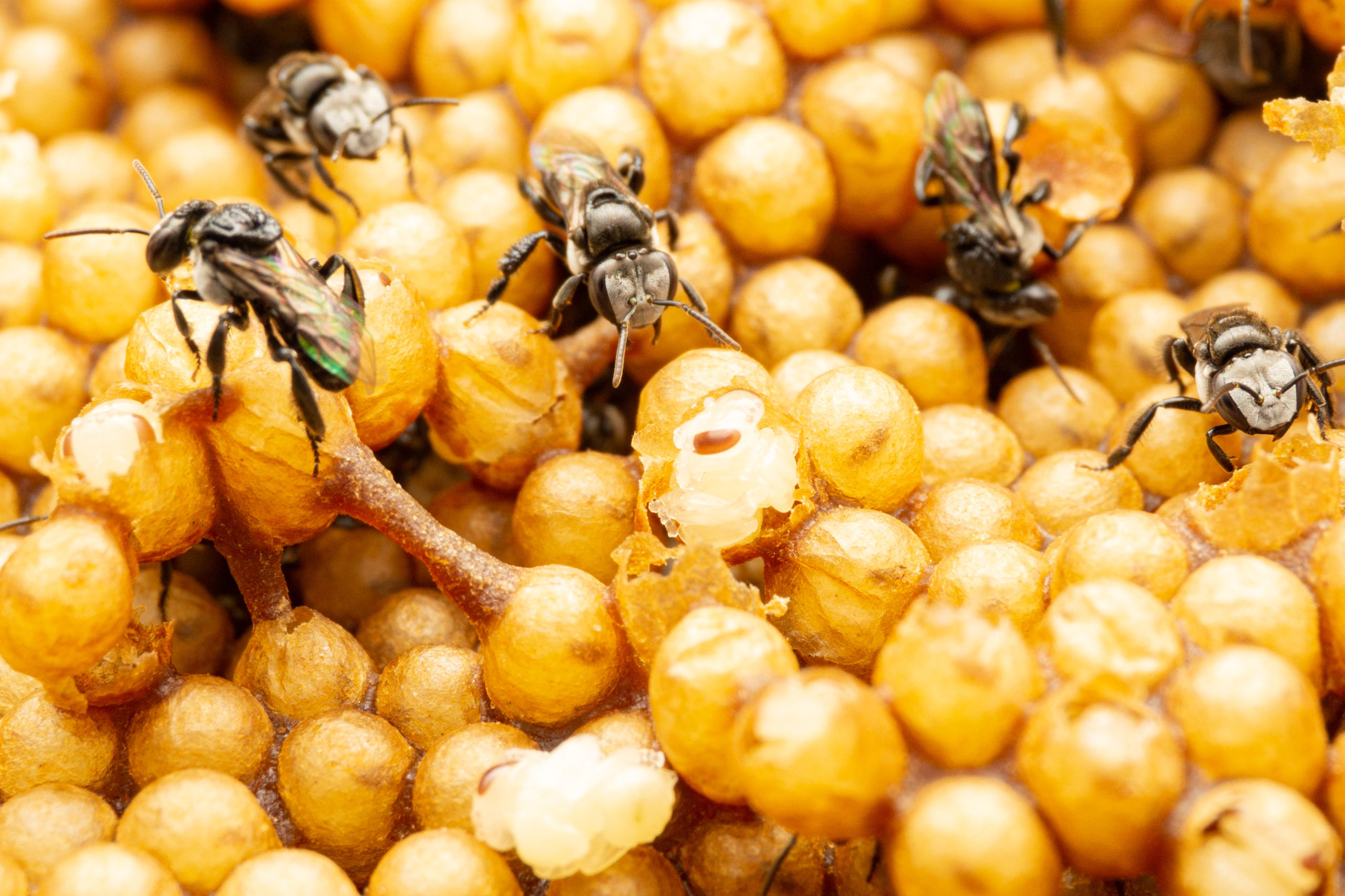Maternal insects – humans aren’t the only species that protect their young

Turns out that parenting instincts are alive and well in the insect kingdom. While some will simply lay and leave their eggs, others go out of their way to make sure that their young have the best chance possible at survival.
Entomology PhD Candidate Jessa Thurman observed this first hand in Queensland in January 2021 when she filmed a Lustrous Dark Lady cockroach (Methana convexa) deliberately covering her ootheca (egg case) with bark to protect it.
Good vs very bad
Jessa says that insects can be both remarkable and terrible parents: “Insects have a variety of adaptations when it comes to maternal care. Stick insects often fling their eggs from the canopy to the leaf litter below, leaving their newly hatched nymphs to essentially fend for themselves.”
“Some stink bugs, on the other hand, will sit guard over their eggs for several days, starving themselves to protect their babies! Each strategy works, but I’m more amazed by the time and energy that some insect mums, like stink bugs, put into raising their babies.”

Numero uno
Of all the mums, Jessa explains that the carnival bug (Peltocopta crassiventris) wins her vote for best parent.
“Not only does the female of this species stand over her eggs to guard them, she also carries her nymphs around after they hatch! They don’t crawl onto her back though. Instead, they crawl onto the underside of the female’s unique dome-shaped abdomen. You get quite a surprise when you peer underneath some of these females and see 20 pairs of eyes looking back at you!”

Childcare
A close second is the giant burrowing cockroach (Macropanesthia rhinoceros). They have a special childcare strategy that everyone can appreciate.
“Both the male and female can care for these nymphs as they grow, bringing down leaves into their deep, sandy burrows. Some mummy cockroaches are even known to care for their nymphs for a year! I’ve kept this species as a pet and find it sweet that the nymphs are always found beside their mother.”
Collective awwww. We almost want to adopt one too.
Jessa’s book, Australia’s Incredible Insects, is on sale now. Buy it here.

Author Jessa Thurman. Image credit: Cesar Puechmarin. 
Australia’s Incredible Insects, $34.99, is on sale now.









